
I have a slight problem with language. Or rather I don’t really have a problem with it, but some other people do, and they get offended by seeing some of the slogans on posters and placards. I don’t like to offend people gratuitously, and I was pleased to be able to find a viewpoint when making this photograph which obscured a vital letter ‘F’.
And though it doesn’t worry me, I normally use asterisks in captions and articles to avoid offending others with words such as f**k. Though myself I feel more offended by issues such as poverty and homelessness than in language that is a part of normal speech for many. At heart I think it’s a class issue, and I’m much more upset by class prejudice than by swearing.
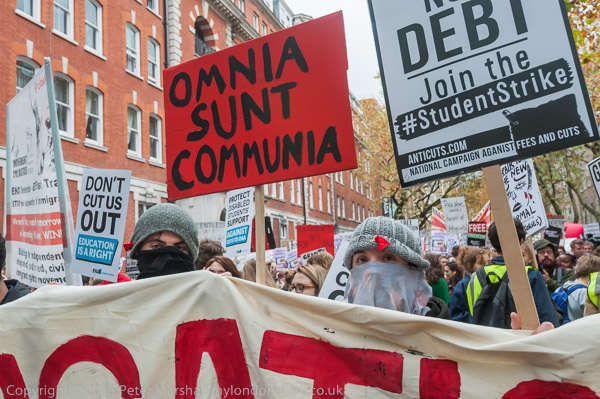
The protest for free education with its slogan ‘No Barriers, No Borders, No Business‘ was certainly a good one for placards, with a wide variety, including at least one in Latin. I was fortunate to have benefited from free education, which did for me include an O Level in that language, but probably even those without that advantage could understand the gist of this one, ‘Omnia Sunt Communia‘. But I did have to turn to Google to find that it was a phrase pinned by his torturers on reformation theologian Thomas Muntzer who led the German peasants revolt of 1525.
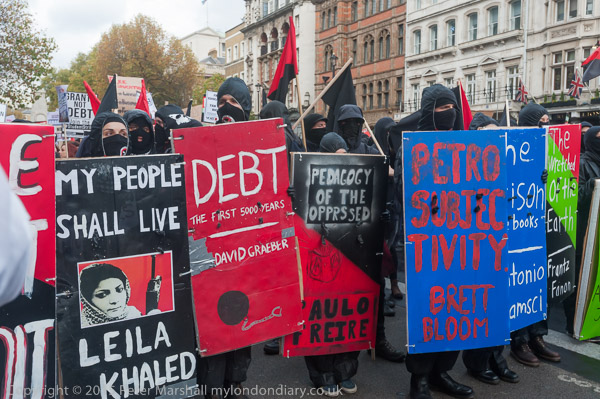
Fittingly for an education protest there was a ‘book bloc’, including here I couple I’ve read and including here two other authors I’ve photographed, though perhaps a shame that one of the volume titles includes a spelling error.
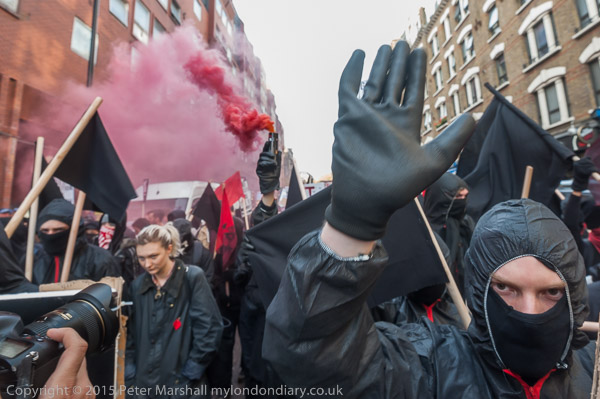
There were a few flares set off during the march, and something of a scramble by photographers to photograph them. I didn’t get any particularly good pictures, though one was enlivened by a masked protester holding up his hand to try and block my lens – which made me widen the view of my zoom to include him. But mostly people were friendly and happy to be photographed.

The ‘black bloc’ took on a more uniform appearance for the protest, most wearing identical jackets and trousers to make themselves rather less identifiable. But even so some were unhappy about photography. They were carrying black flags on sturdy poles and at times used them to restrict access to the bloc – as in the picture above.
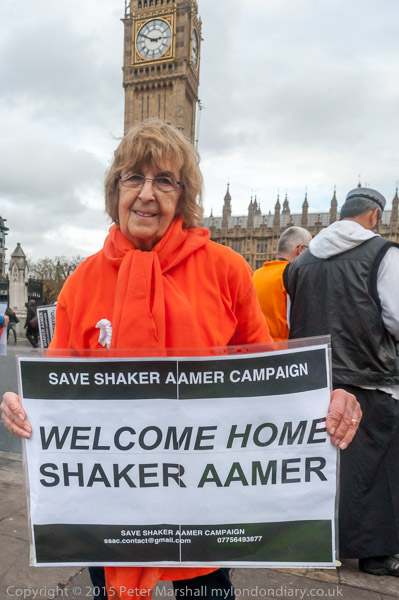
I left the march as it went down Millbank to speak to and photograph a protest that was also taking place along the edge of Parliament Square, where campaigners from the Save Shaker Aamer Campaign who have mounted a weekly vigil for his release opposite Parliament every Wednesday when Parliament was sitting were celebrating to welcome him home. There celebration was a little muted, as although he was the last British resident there, over a hundred men still remained captive.
I shared their rejoicing over his release, and also as I photographer flet glad I would not have to continue photographing – at least occasionally their weekly vigils. With similar protests on a regular basis it does become hard to say anything new, both in the text and the images. Protests against Guantanamo will of course continue, and I’ll still go to photograph them when I can, including the regular monthly event at the US Embassy.
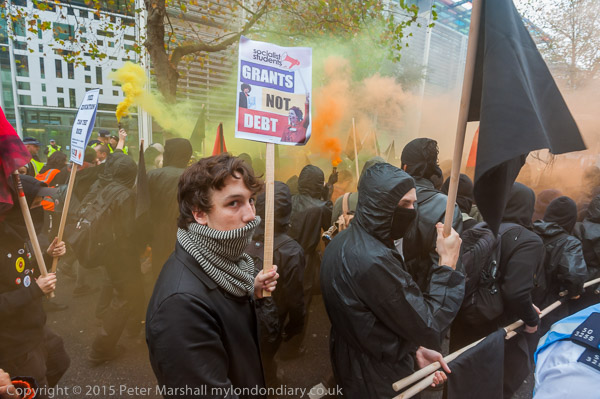
I caught up with the students again outside the Home Office, but arrived a little too late to cover the protest there fully. From there they went to the Dept of Business, Innovation & Skills – which, as I commented ‘is now responsible for the universities which are no longer seen by government as a part of education.’
Here they made a fairly half-heated attempt to push through a police line, but were repulsed. Then a large group of police arrived and mounted a charge against the students, including many of those who had simply been standing and watching. I saw several photographers also being assaulted by police and got pretty roughly pushed to one side myself.
The police regrouped and stood watching the students. More police arrived and formed a tight line across the street, kettling the protest. I decided I’d had enough, but had some difficulty as officers refused to allow me through the line despite showing my press card. I walked along the line and eventually found an officer who let me through, and walked away. I’d gone about a hundred yards down a side street when I heard a lot of noise, and turned around to see a crowd of students running, having broken through the police line. But I was tired, having been on my feet too long, and couldn’t face running after them – and continued on my way home.